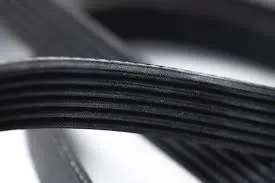- Arabic
- French
- Russian
- Spanish
- Portuguese
- Turkish
- Armenian
- English
- Albanian
- Amharic
- Azerbaijani
- Basque
- Belarusian
- Bengali
- Bosnian
- Bulgarian
- Catalan
- Cebuano
- Corsican
- Croatian
- Czech
- Danish
- Dutch
- Afrikaans
- Esperanto
- Estonian
- Finnish
- Frisian
- Galician
- Georgian
- German
- Greek
- Gujarati
- Haitian Creole
- hausa
- hawaiian
- Hebrew
- Hindi
- Miao
- Hungarian
- Icelandic
- igbo
- Indonesian
- irish
- Italian
- Japanese
- Javanese
- Kannada
- kazakh
- Khmer
- Rwandese
- Korean
- Kurdish
- Kyrgyz
- Lao
- Latin
- Latvian
- Lithuanian
- Luxembourgish
- Macedonian
- Malgashi
- Malay
- Malayalam
- Maltese
- Maori
- Marathi
- Mongolian
- Myanmar
- Nepali
- Norwegian
- Norwegian
- Occitan
- Pashto
- Persian
- Polish
- Punjabi
- Romanian
- Samoan
- Scottish Gaelic
- Serbian
- Sesotho
- Shona
- Sindhi
- Sinhala
- Slovak
- Slovenian
- Somali
- Sundanese
- Swahili
- Swedish
- Tagalog
- Tajik
- Tamil
- Tatar
- Telugu
- Thai
- Turkmen
- Ukrainian
- Urdu
- Uighur
- Uzbek
- Vietnamese
- Welsh
- Bantu
- Yiddish
- Yoruba
- Zulu
تشرینی دووەم . 22, 2024 17:33 Back to list
industrial flat belt
Understanding Industrial Flat Belts A Critical Component in Manufacturing
In the realm of manufacturing and industry, efficient power transmission is paramount. One of the key components in achieving this efficiency is the industrial flat belt. These belts are not just simple bands of material; they are crucial for the functionality of various machines and processes across different sectors. In this article, we will delve into the fundamentals of industrial flat belts, their applications, advantages, and the materials used in their construction.
What Are Industrial Flat Belts?
Industrial flat belts are continuous loops of material used to convey power between pulleys in machines. Unlike other types of belts that may have grooves or teeth, flat belts maintain a smooth surface. They work on the principle of friction, where the belt sits on pulleys and the friction between the two allows power to be transmitted. These belts are typically made of rubber, leather, or synthetic materials, designed to fit specific industrial needs and operating conditions.
Applications of Industrial Flat Belts
Flat belts are widely utilized across a variety of sectors, including but not limited to
1. Manufacturing In factories, flat belts are often used in conveyor systems to move products from one station to another. Their ability to handle heavy loads makes them ideal for manufacturing environments.
2. Agriculture Farm machinery often employs flat belts for power transmission from engines to various components, such as harvesters and milking machines.
3. Mining In the mining industry, flat belts are used in conveyor systems to transport minerals and ores efficiently from one site to another.
4. Textiles The textile industry relies on flat belts in looms and other machinery to maintain the flow of production and ensure smooth operation.
5. Automotive Flat belts can also be found in some automotive applications where they assist in driving different engine components.
Advantages of Using Industrial Flat Belts
Industrial flat belts come with a plethora of advantages that make them a preferred choice for many applications
industrial flat belt

1. High Efficiency Flat belts can transmit high levels of power over long distances with minimal losses due to their smooth surface, which reduces friction.
2. Durability Made from strong materials, industrial flat belts can withstand significant wear and tear, making them suitable for heavy-duty applications.
3. Versatility These belts can be used in a variety of machines and industries, showcasing their adaptability to diverse operational environments.
4. Low Maintenance Unlike other belt types that may require regular adjustments or replacements, flat belts have a relatively low maintenance requirement, which can save on operational costs.
5. Reduced Noise Due to their design and material choice, flat belts often operate with less noise compared to traditional v-belts or cogged belts.
Materials Used in Flat Belt Construction
The durability and efficiency of flat belts largely depend on the materials used in their manufacturing. Common materials include
- Rubber Rubber flat belts are popular due to their flexibility and resistance to wear. They typically offer good grip and are suitable for high-friction applications.
- Leather Historically, leather was widely used for flat belts. Although less common today, it is still appreciated for its natural flexibility and strength.
- Synthetic Materials Modern flat belts often utilize synthetic polymers such as PVC and polyurethane. These materials can be engineered to provide specific properties, such as heat resistance or higher tensile strength.
Conclusion
In conclusion, industrial flat belts play a vital role in the efficiency of machinery across various sectors of the economy. Their ability to transmit power smoothly and reliably makes them indispensable in manufacturing, agriculture, mining, and beyond. Understanding their construction and applications allows industries to harness their benefits fully, ensuring that operations run smoothly and effectively. As technology advances, the design and materials of flat belts will likely continue to evolve, paving the way for even greater efficiency and performance in industrial applications.
-
Korean Auto Parts Timing Belt 24312-37500 For Hyundai/Kia
NewsMar.07,2025
-
7PK2300 90916-T2024 RIBBED BELT POLY V BELT PK BELT
NewsMar.07,2025
-
Chinese Auto Belt Factory 310-2M-22 For BMW/Mercedes-Benz
NewsMar.07,2025
-
Chinese Auto Belt Factory 310-2M-22 For BMW/Mercedes-Benz
NewsMar.07,2025
-
90916-02660 PK Belt 6PK1680 For Toyota
NewsMar.07,2025
-
drive belt serpentine belt
NewsMar.07,2025

